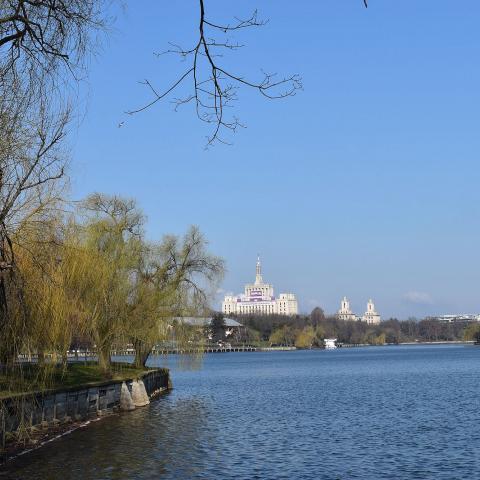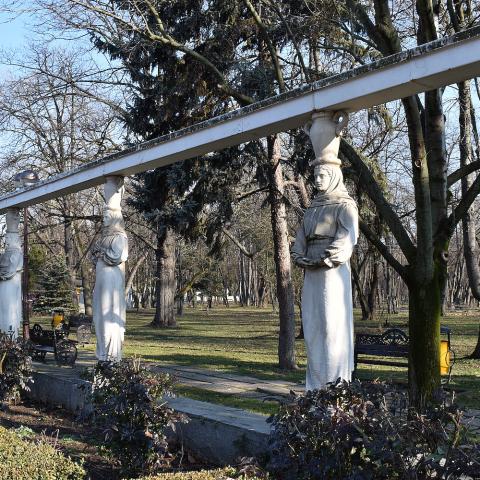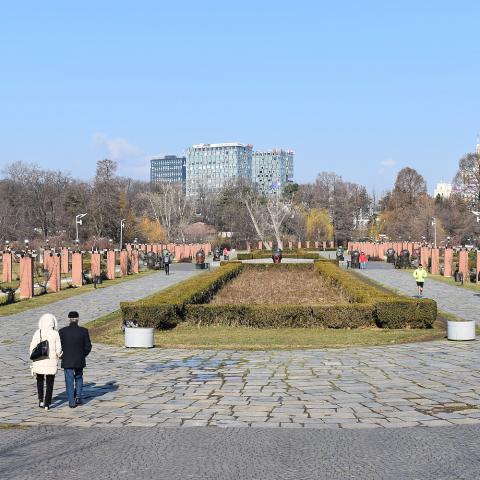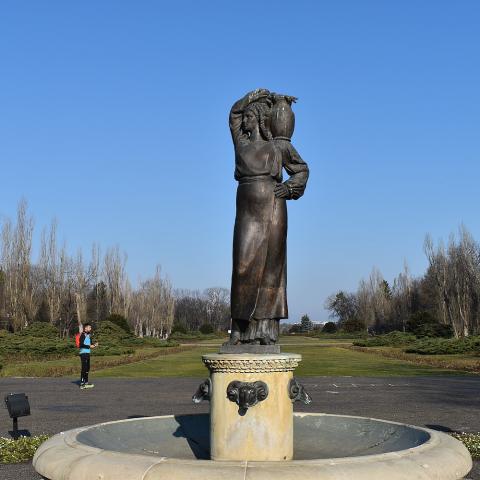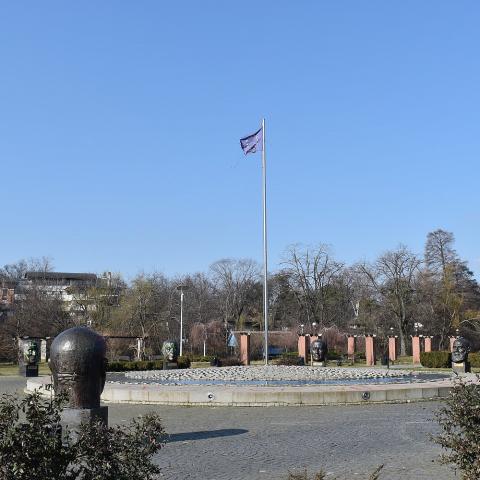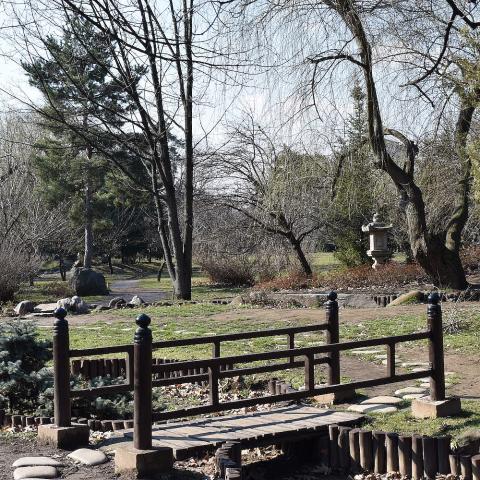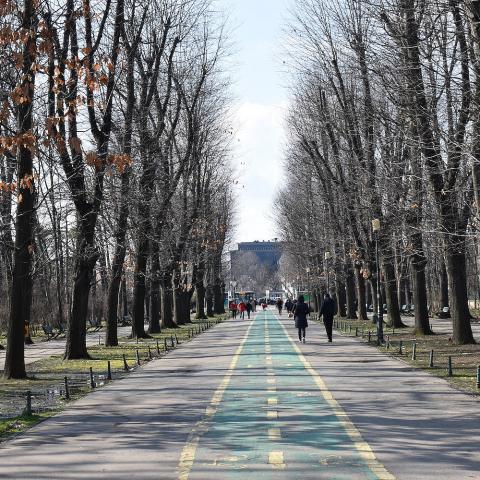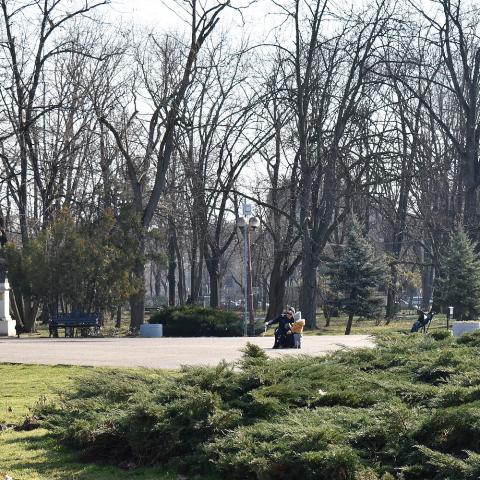"Destination: Bucharest" - King Michael I Park - former Herăstrău

The local equivalent of Madrid’s El Retiro or London’s Hyde Park, King Michael I Park is the place where the city residents can find a green and quiet refuge but also many sport, culture, entertainment and socializing options.
The park was set up during the reign of King Carol II, in 1936, and architects Ernest Pinard and Friedrich Rebhuhn were tasked with the project. The park carried the king’s name for a while, before being renamed the National Park, then I.V. Stalin Park, and, afterward, Herăstrău Park. It was renamed King Michael I Park at the end of 2017, to honor the memory of the last sovereign of Romania, who passed away in December of that year.
Just as the city transformed in time, so does the park carry the footprint of the political and urbanistic changes that took place since its creation and the monuments it hosts tell this story very well.
We go in through the Charles de Gaulle entrance, where the state of the French general and politician can be found. The statue, the work of sculptor Mircea Corneliu Spătaru, was unveiled in 2006, on the occasion of the 11th Summit of Francophonie. Previously, between 1951 and 1962, on the same location, the statue of Iosif Stalin was placed. Today, the silhouette of de Gaulle is a meeting place for those coming to the park and a landmark for those running here, not few on a weekend morning.
We walk past the statue, encounter an early-rising jogger and a man walking his dog, and reach the Alley of the Caryatides. Sitting ten on each side, the composite statues represent peasant women from Muscel and Mehedinti. They wear jugs upon their heads and have different hand positions. History and heraldry fans can discover on the two walls on the southern side of the ensemble two coat of arms of Bucharest: the 1879 one and the current one.
The ensemble of statues welcoming visitors today was made in 2005 by sculptor Ionel Stoicescu and is a replica of the one created by Constantin Baraschi in 1939. Sculptor Stoicescu worked on the basis of photographs and had as a model one of the original caryatides, found at the Bellu cemetery. The original work was destroyed in the 1950s, but the residents of the city and visitors can enjoy today a view similar to the one the city’s inhabitants could admire during the interwar period.
Baraschi, who also made, among others, the Zero Kilometer Monument located inside the park of the St Gheorghe Church in the Capital, designed the caryatids for what was named at the time the Restoration Alley of the King Carol II Park.
A little further in front, the Modura Fountain welcomes us. It was made by Stoicescu after Baraschi’s original. The fountain has a complicated history, but also a beautiful story, related to the one who inspired it. She was a young woman from the area of Bihor, named Mudura. According to the story, on a flight back to Bucharest, King Carol II was left without fuel and had to land at the outskirts of the Vadul Crișului village, in Bihor. Mudura was the one who offered the future king water from her jug. To thank her, Carol II brought her to Bucharest, and her name changed to Modura. She was part of the royal entourage and a model for a banknote of that period.
We stop to admire the work and the features of Modura, whose hospitality remained legendary and advance towards the shore of the Herăstrău lake, on the alleys where runners make their morning workout, parents push the strollers of their young ones and cyclists pedal still unhindered by the mid-day crowds. On one side, a mother entertains her very young child with soap bubbles.
On the way, several statues catch our eye. Among them is the Sleeping Nymph, the 1906 work of sculptor Filip Marin. Initially, the statue was part of the ensemble The Giants and the Sleeping Nymph, located in Carol I Park. In the 1960s, the ensemble was dismantled and the statue representing the nymph was moved to King Michael I Park. A bit further away we find a bronze statue representing Prometheus, the work of Belgian sculptor Joseph-Marie-Thomas Lambeaux. We are in the Expoflora area, where, come spring, a multitude of flowers put on an impressive show of colors and gentleness.
Bit by bit we made it to the shore of the Herăstrău Lake, set up in 1930-1935 after the draining of a swampy area located at the time on the outskirts of the city. Engineer Nicolae Caranfil was tasked with the project. He was also the one who managed the electrification of the city and the systematization of the ponds surrounding the city, transforming them into a network of lakes. A memorial plaque located at the Dimitrie Gusti National Village Museum reminds passersby of this initiative and of the creation of the park, during the reign of King Carol II. The lake has a surface of 74 hectares, and from its shore one can see the silhouettes of the Free Press House and of the office buildings erected in recent years in the northern part of the Capital. The lake offers several sports and entertainment options, and those interested can try a boat ride.
We head to the Island of the Roses. On the way there we meet, in one corner of the park, a group practicing Falun Gong exercises, combining meditation and qigong exercise. The calm enveloping the park seems to be the right environment for them.
We cross the bridge leading to the island, walking past a man who is recording a business vlog, and we reach the section where we find “The Monument of the Founding Fathers of the European Union.” It consists of 12 bronze busts of 12 European politicians who made a decisive contribution to the creation of the European Union. Jean Monnet, Robert Schuman, Altiero Spinelli, Alcide De Gasperi, Konrad Adenauer, Walter Hallstein, Paul Henri Spaak, Jean Rey, Johann Willem Beyen, Sicco Leendert Mansholt, Joseph Bech and Pierre Werner are all represented here. The monument was conceived by architects Cătălin Cazacu and Paul Valentin, and produced by sculptor Ionel Stoicescu. In a few months, those walking on the alleys surrounding the monument will be able to also admire the roses that give the name to this area of the park. On one side of the island we have the view of several houses that are part of the Village Museum. Nearby, although hidden from sight, is the Elisabeta Palace. It was built in the 1930s by architect Duiliu Marcu for Queen Elizabeth of Greece, born princess of Romania, one of the sisters of King Carol II. Upon the return to the country of the Romanian royal family, the palace became their official residence.
We leave the island behind and go on to take a look at the area designed for skaters. Opened in 1998, SkatePark Herăstrău is a favorite spot for skateboarding, roller-skating, BMX and scooter fans. They are of all ages, from the youngest bikers, wearing colorful helmets on their heads, to teen skaters, already experienced, trying various tricks. Nearby, an adventure park is open during the warm season. It has four tracks of progressive difficulty, for children aged in between 4 and 7, and those older than 8.
We advance past the SkatePark, towards the Village Museum, and stop for a visit inside the Japanese Garden, another attraction of the park. The garden was created more than 20 years ago at the initiative of the Embassy of Japan in Romania. It was recently refurbished and redesigned, and, at the beginning of April, it hosts a hanami event - the custom of enjoying the beauty of cherry blossoms, and an occasion to see it become a wonderful nature spot, invaded by the delicate, pink flowers. In the garden, next to them, Japanese maple trees, rhododendron and pine trees are planted.
The vegetation of the King Mihai I Park is a diverse one, the work of German landscape architect Friedrich Rebhuhn. Those who stroll along the park’s alleys can encounter willows, poplars, maple trees, ash and linden trees. The park also hosts protected trees, as is the case with the oak of Tagore, planted in 1961, on the occasion of the centennial celebration of the birth of Indian writer and philosopher Rabindranath Tagore. A botanical rarity in the park is Sophora japonica Bucuresti, a variety of the Japanese pagoda tree, with white speckled leaves.
Throughout the surface of the park there are numerous statues and busts of great authors, both Romanian and foreign, artists or composers, among them Mihai Eminescu, I.L. Caragiale, Victor Hugo, Constantin Brâncuşi, William Shakespeare, Ciprian Porumbescu or Frederik Chopin, alongside many others.
Very popular in summer are the terraces located on the shore of the lake, some of them as old as the park itself. Furthermore, the park also has many playgrounds for children, two pavilions for exhibitions, a summer theater, and dog-friendly areas.
Events in King Mihai Park I
Numerous events* take place throughout the year in King Mihai I Park.
Tradiții și Flori de Sărbători (Holiday Traditions and Flowers) is an Easter fair where visitors can discover traditional products and hand-made items. The event has a gastronomy area, with warm food and season specialties.
Hanami – The cherry blossoms celebration inside the Japanese Garden – every spring, the Embassy of Japan in Bucharest invites the public to enjoy the beauty of the cherry blossoms but also the tea ceremony, the Japanese drums and the art of origami.
Roaba de Cultură (The Culture Wheelbarrow) takes place from May to September, on the meadow next to a famous restaurant. Various events take place here, such as workshops and film screenings for children, puppet theater performances, and also activities for grownups: sport, concerts, film screenings, various workshops and courses.
Copacul cu Cărți (The Tree of Books) is an event aiming to get Bucharest residents to rediscover the pleasure of reading in the middle of nature. In 2019, the event took place in Cișmigiu Park. Besides making available an open-air relaxation and reading area, the event also offers various creative workshops for children, live music sessions and classical music recitals.
Film screenings – In past years, during the summer, the park hosted several editions of the CineParK event – an open-air cinema, a free and accessible alternative to classic cinema.
The park previously hosted activities that were part of the Bucharest Days event; Etnorama – The Ethnicities Festival; the war veterans’ cross - VeteRUN; Pumpkin Fest, where participants built an impressive wall of carved pumpkins; street food festivals and various music and culinary events organized by the terraces and restaurants on the shore of the Herăstrău lake.
*The program of events can change depending on the measures taken in the context of the Covid-19 pandemic.
Useful:
The park is bordered by Marshal Constantin Prezan Boulevard, Aviatorilor Boulevard, Nordului Road, Elena Văcărescu Street, București-Ploiești Road and Regele Mihai I Road.
Access: Subway – Aviatorilor station, Bus lines: 131,282, 301,330, 331, 335 –Piața Charles de Gaulle station, 131,331, 335,783 – Arcul de Triumf station; 131,205, 331, 335 – Muzeul Satului station; 131,205, 331, 335, 780,783 – Piața Presei Libere station.
This material is part of a project under the program of promoting the touristic heritage "Destination: Bucharest", carried out by the Bucharest City Hall through the Public Monuments and Touristic Heritage Administration (AMPT).
Photos by Romania-Insider.com for AMPT








